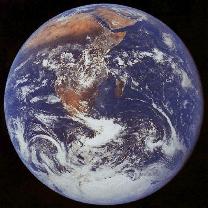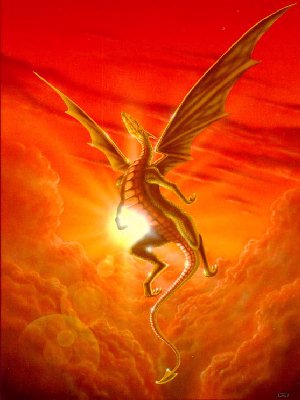|
| |||||||||||
| ||||||||||||
| |||
|
| ||
| |||
Periodic Table of the Elements
~ as is currently misunderstood by those silly humanoid Earthlings.
| Alkali Metals | Noble Gasses | Non Metals | Other Metals |
| Lanthanide Series | Actinide Series | Transition Metals | Alkaline Earth Metals |
| Group | 1 |
2 |
3 |
4 |
5 |
6 |
7 |
8 |
9 |
10 |
11 |
12 |
13 |
14 |
15 |
16 |
17 |
18 |
| Period | ||||||||||||||||||
| 1 | 1 H Hydrogen 1.00794 |
2 He Helium 4.003 |
||||||||||||||||
| 2 | 3 Li Lithium 6.941 |
4 Be Beryllium 9.0122 |
5 B Boron 10.81 |
6 C Carbon 12.001 |
7 N Nitrogen 14.007 |
8 O Oxygen 15.999 |
9 F Florine 18.998 |
10 Ne Neon 20.179 |
||||||||||
| 3 | 11 Na Sodium 22.990 |
12 Mg Magnesium 24.305 |
13 Al Aluminum 26.98 |
14 Si Silicon 28.086 |
15 P Phosporus 30.974 |
16 S Sulfer 32.06 |
17 Cl Chlorine 35.453 |
18 Ar Argon 39.948 |
||||||||||
| 4 | 19 K Potassium 39.098 |
20 Ca Calcium 40.08 |
21 Sc Scandium 44.956 |
22 Ti Titanium 47.88 |
23 V Vanadium 50.94 |
24 Cr Chromium 51.996 |
25 Mn Manganese 54.938 |
26 Fe Iron 55.847 |
27 Co Cobalt 58.9332 |
28 Ni Nickel 58.69 |
29 Cu Copper 63.546 |
30 Zn Zinc 65.39 |
31 Ga Gallium 69.72 |
32 Ge Germanium 72.59 |
33 As Arsenic 74.922 |
34 Se Selenium 78.96 |
35 Br Bromine 79.904 |
36 Kr Krypton 83.80 |
| 5 | 37 Rb Rubidium 85.468 |
38 Sr Strontium 87.62 |
39 Y Yttrrium 88.9059 |
40 Zr Zirconium 91.224 |
41 Nb Niobium 92.91 |
42 Mo Molybdenum 95.94 |
43 Tc Technetium 98 |
44 R Ruthenium 101.07 |
45 Rh Rhodium 102.906 |
46 Pd Palladium 106.42 |
47 Ag Silver 107.868 |
48 Cd Cadmium 112.41 |
49 In Indium 114.82 |
50 Sn Tin 118.71 |
51 Sb Antimony 121.75 |
52 Te Tellurium 127.60 |
53 I Iodine 126.905 |
54 Xe Xeon 131.29 |
| 6 | 55 Cs Cesium 132.91 |
56 Ba Barium 137.33 |
* |
72 Hf Hafnium 178.49 |
73 Ta Tantalum 180.95 |
74 W Tungsten 183.85 |
75 Re Rhenium 186.207 |
76 Os Osmium 190.2 |
77 Ir Iridium 192.22 |
78 Pt Platnium 195.08 |
79 Au Gold 196.967 |
80 Hg Mercury 200.59 |
81 Tl Thallium 204.383 |
82 Pb Lead 207.2 |
83 Bi Bismuth 208.98 |
84 Po Polonium 209 |
85 At Astatine 210 |
86 Rn Radon 222 |
| 7 | 87 Fr Francium 223 |
88 Ra Radium 226.025 |
** |
104 Rf Rutherfordium 261 |
105 Ha Hahnium 262 |
106 Unh Unnilhexium 263 |
107 Ns Nielsbohrium 262 |
108 Hs Hassium 265 |
109 Mt Meitnerium 266 |
110 Uun Ununnilium 269 |
111 Uuu Unununium 272 |
112 Uub Ununbium 277 |
||||||
| * Lanthanides | 57 La Lanthanum 138.906 |
58 Ce Cerium 140.12 |
59 Pr Praseodymium 140.908 |
60 Nd Neodymium 144.24 |
61 Pm Promethium 145 |
62 Sm Samarium 150.36 |
63 Eu Europium 151.96 |
64 Gd Gadolinium 157.25 |
65 Tb Terbium 158.925 |
66 Dy Dysprosium 162.50 |
67 Ho Holmium 164.93 |
68 Er Erbium 167.26 |
69 Tm Thulium 168.934 |
70 Yb Ytterbium 173.04 |
71 Lu Lutertium 174.967 |
|||
| ** Actinides | 89 Ac Actinium 227.028 |
90 Th Thorium 232.038 |
91 Pa Protactinium 231.036 |
92 U Uranium 238.029 |
93 Np Neptunium 237.048 |
94 Pu Plutonium 244 |
95 Am Americium 243 |
96 Cm Curium 247 |
97 Bk Berkelium 247 |
98 Cf Californium 251 |
99 Es Einstenium 252 |
100 Fm Fermium 257 |
101 Md Mendelevium 258 |
102 No Nobelium 259 |
103 Lr Lawrencium 260 |
|||
Alkaline Metals
All of the Alkali Metals are very reactive. They are found in group IA.
None of the alkali metals are found on the earth due to the fact that they react easily.
There are six elements in the alkali metals family.
|
Noble Gasses
Any of the elements in Group O of the periodic table, including helium, neon, argon, krypton, xenon, and radon, which are monatomic
and with limited exceptions chemically inert. Also called inert gas.
|
Non Metals
Non-Metals are found in the same groups as other metals, with the exception being hydrogen (group IA).
The are poor conductors of electricity and heat. Non-Metals are not very dense.
Non-metals obviously have a non-metallic luster and can be transparent or translucent.
These eleven elements are either gases, liquids, or solids.
|
Other Metals
Other Metals are found in groups IIIB through VIB.
They are also good conductors of electricity and heat.
Metalloids also have a metallic luster and are opaque. All are solids.
|
Lanthanide Series
Lanthanide Series include atomic numbers 58 through 71 in group IIIb of the Periodic Table.
Although they closely resemble LANTHANUM and each other in their chemical and physical properties,
lanthanum (at.no. 57) is not always considered a member of the series.
|
Actinide Series
Actinide series contains the radioactive metals.
Actinide Series are atomic numbers 89 through 103, in the group IIIb of the Periodic Table.
|
Transition Metals
The transition metals, consisting of 30 elements, are the largest family in the periodic table.
They generally conduct Heat well. They are also good at conducting electricity. The transition metals have a metallic luster.
|
Alkaline Earth Metals
Alkaline-earth metals are the elements in group IIa of the Periodic Table.
They are softer than most other metals and react readily with water.
|





